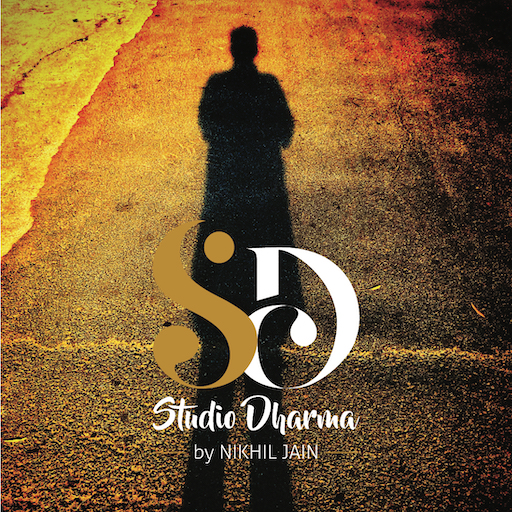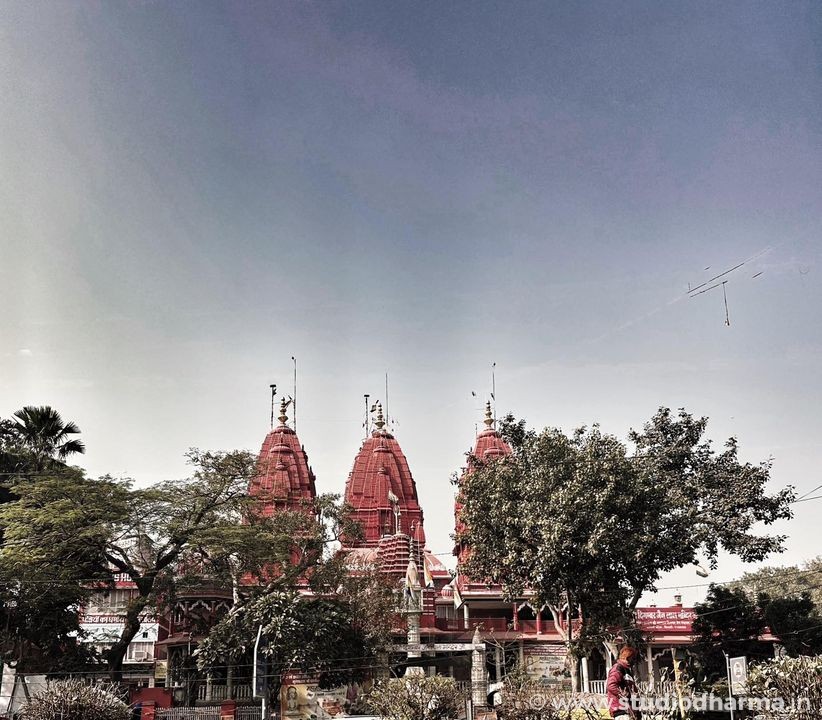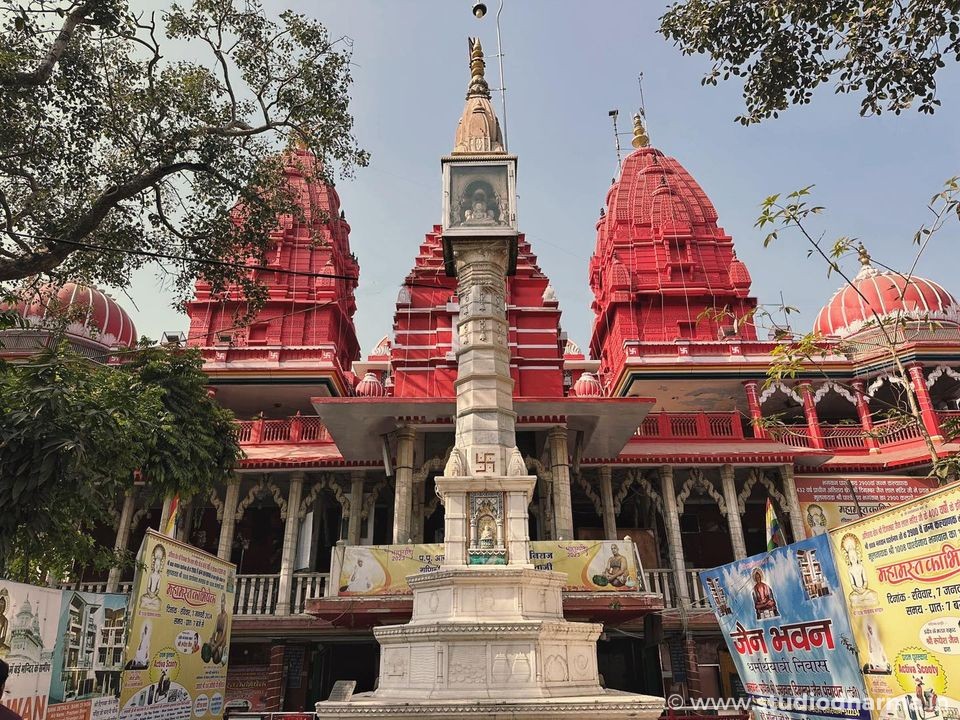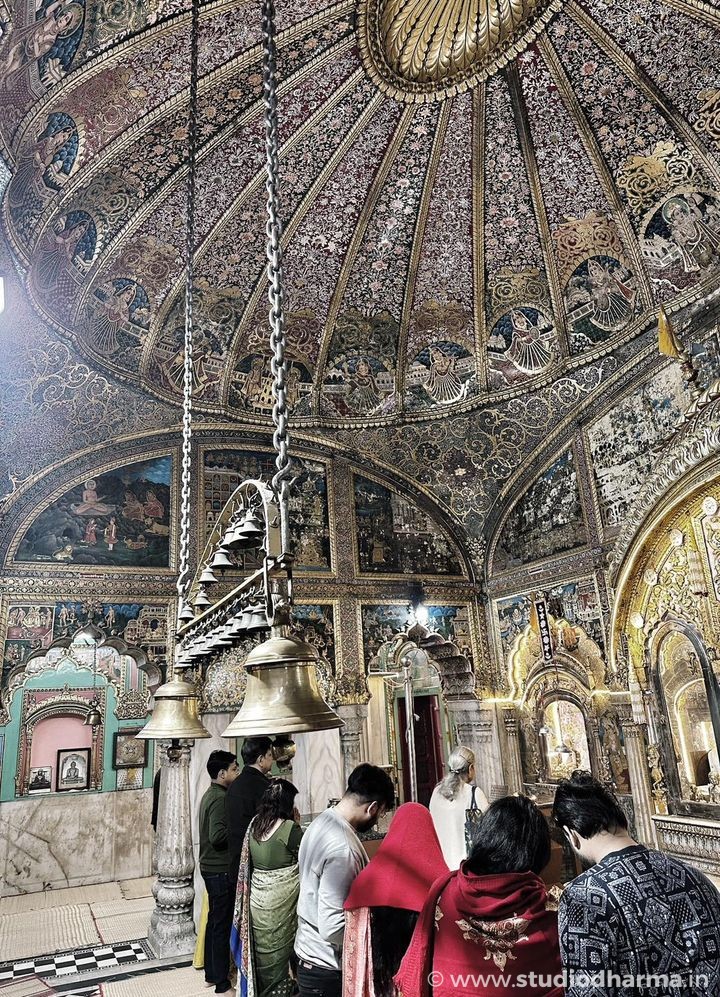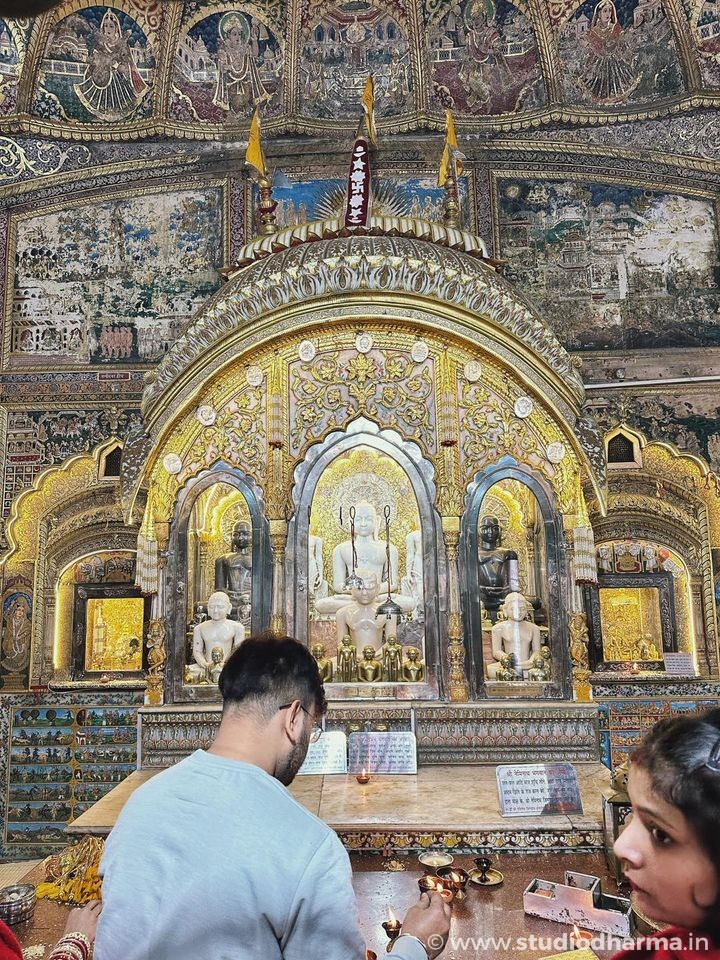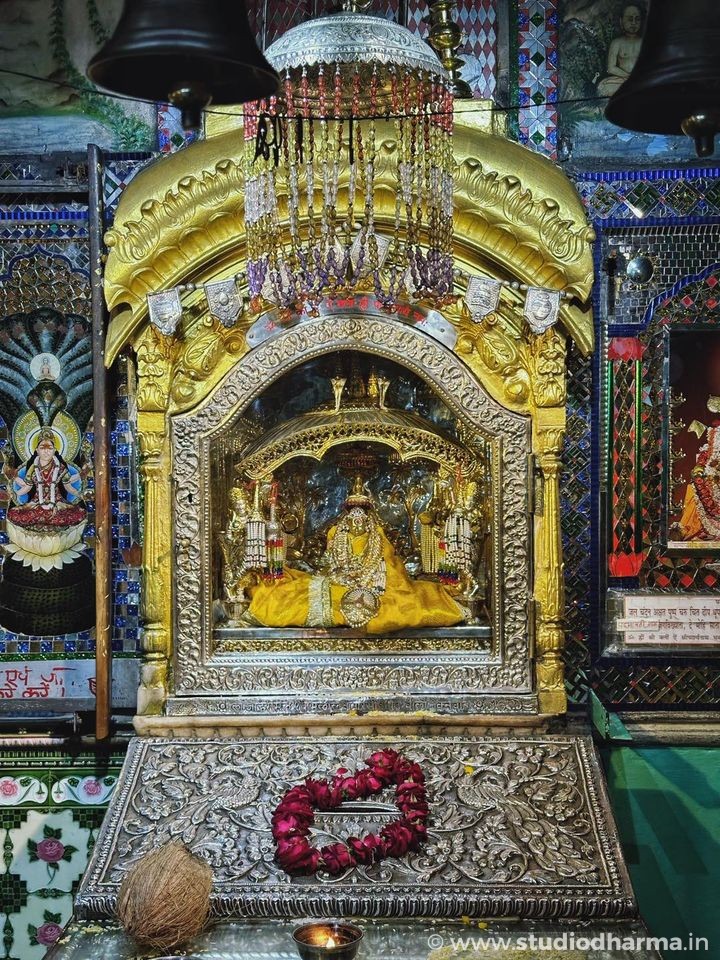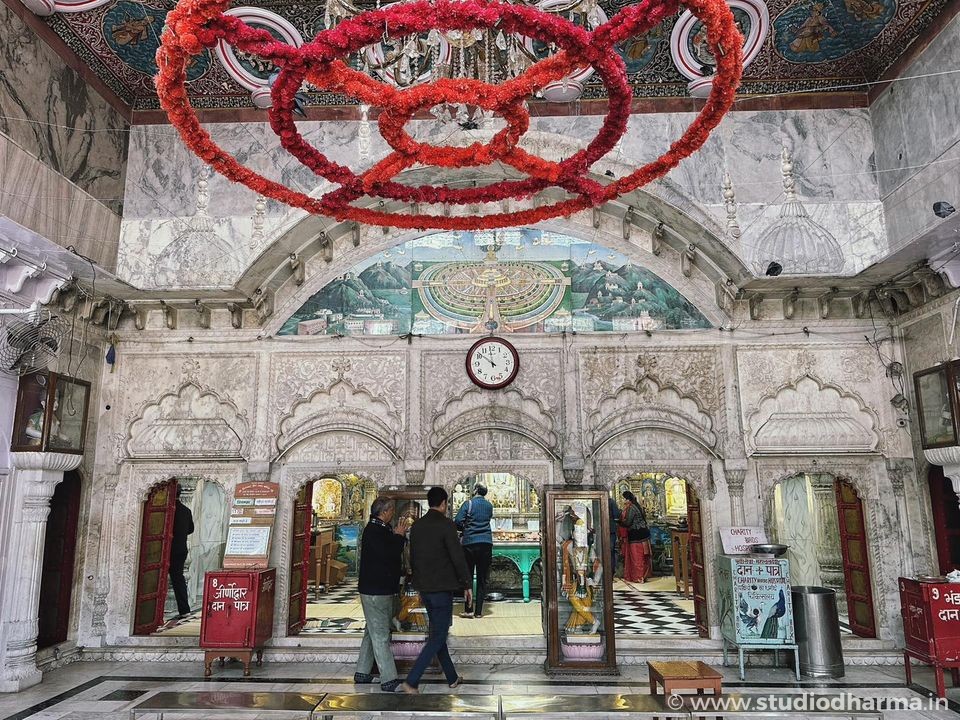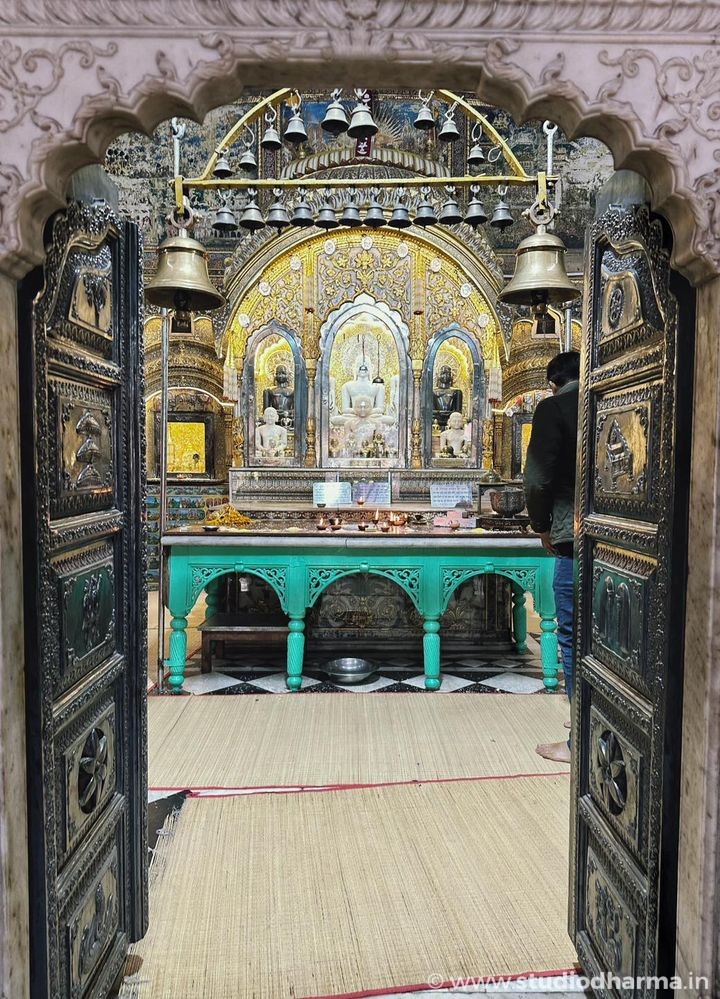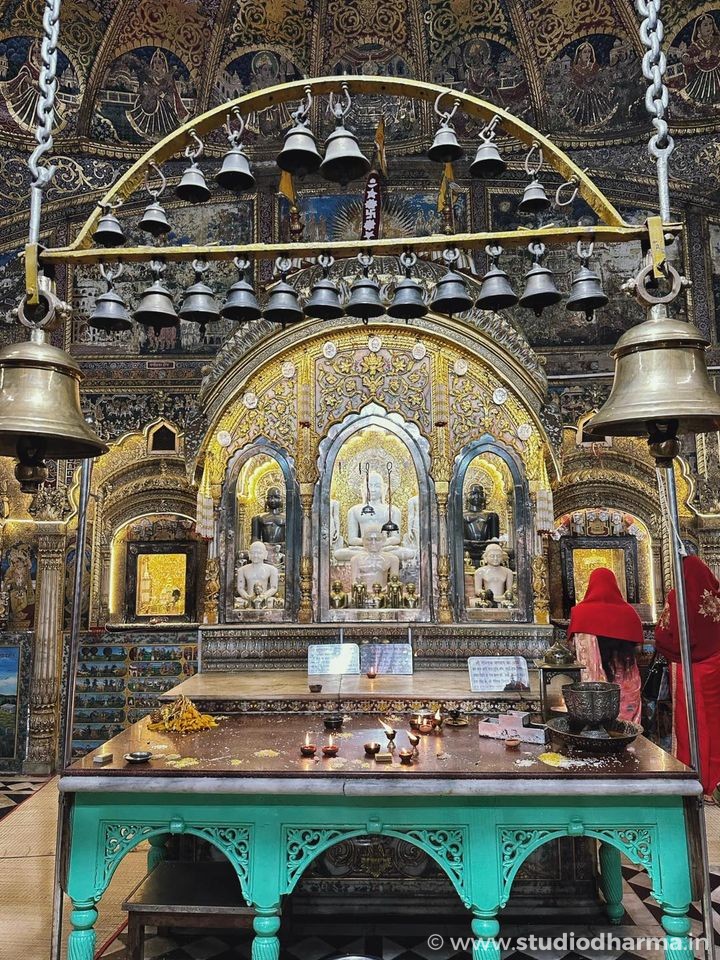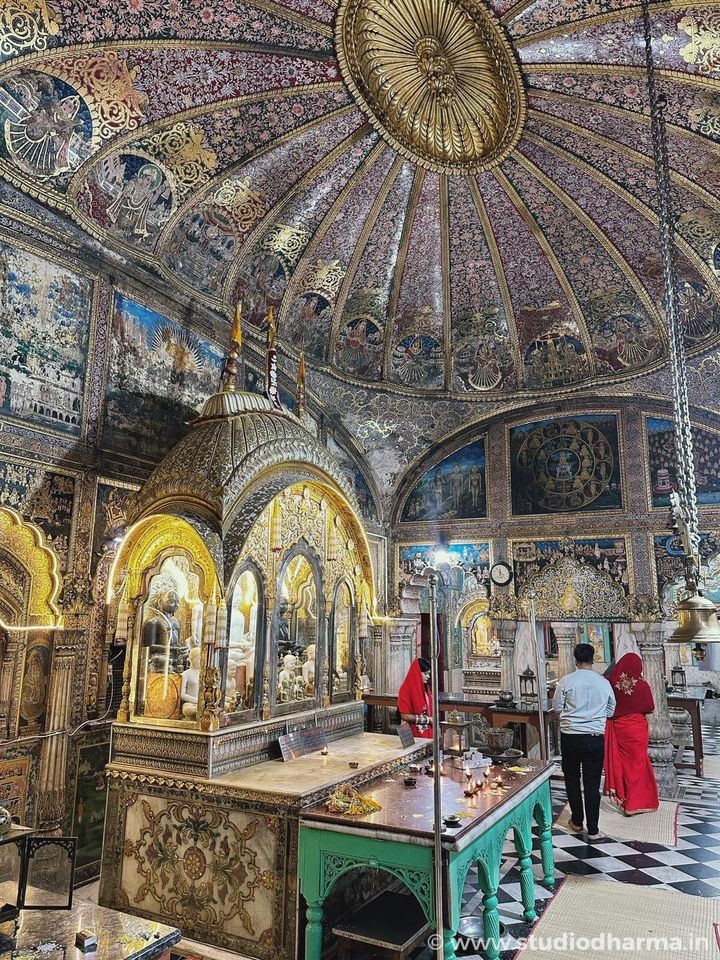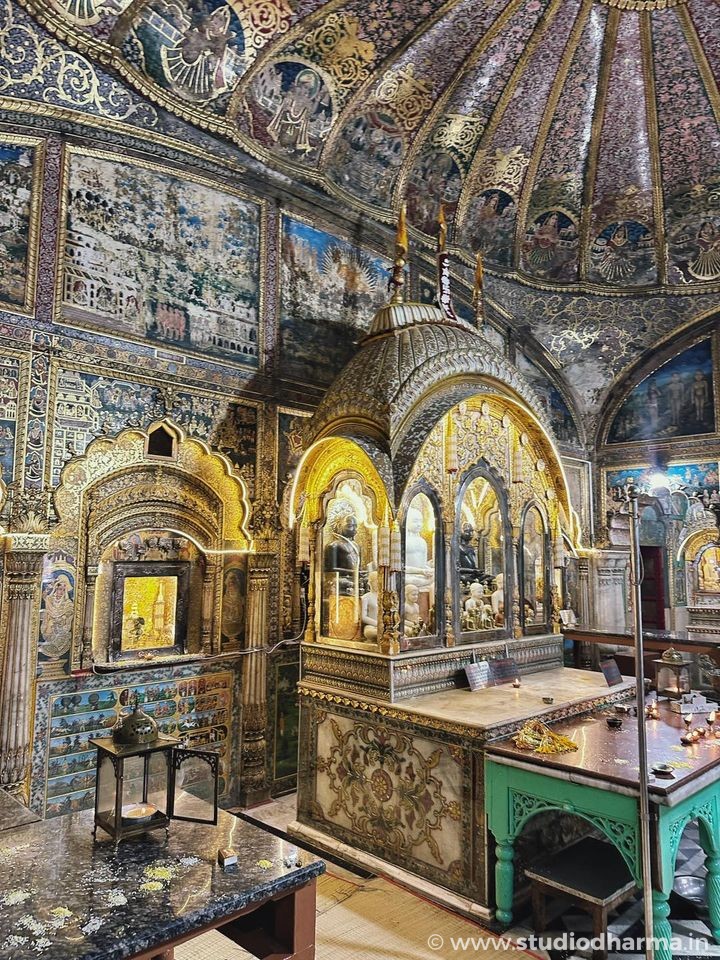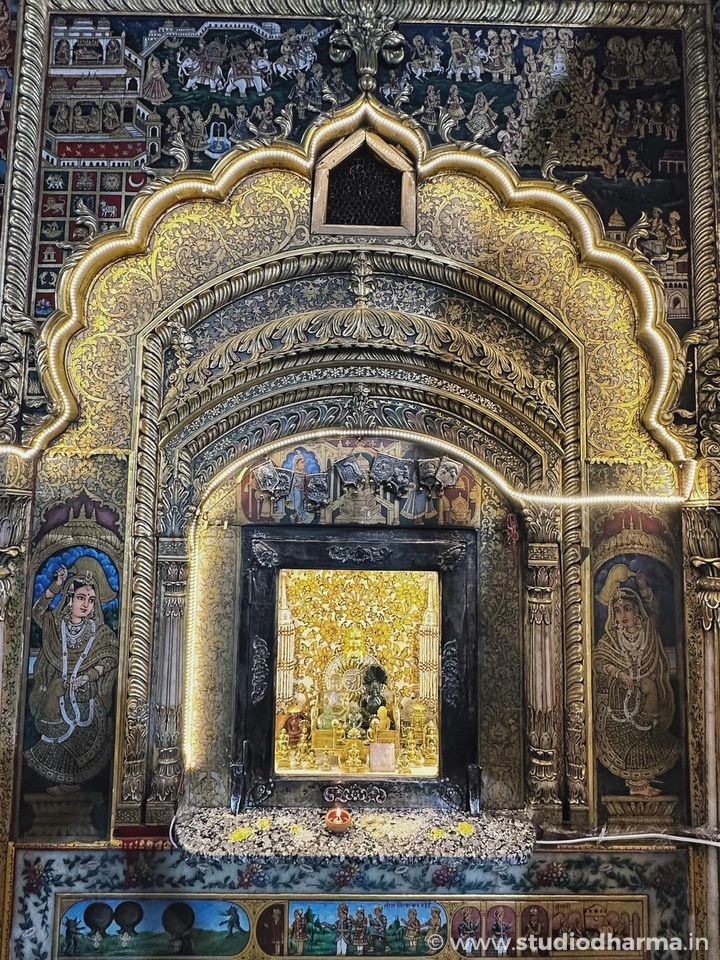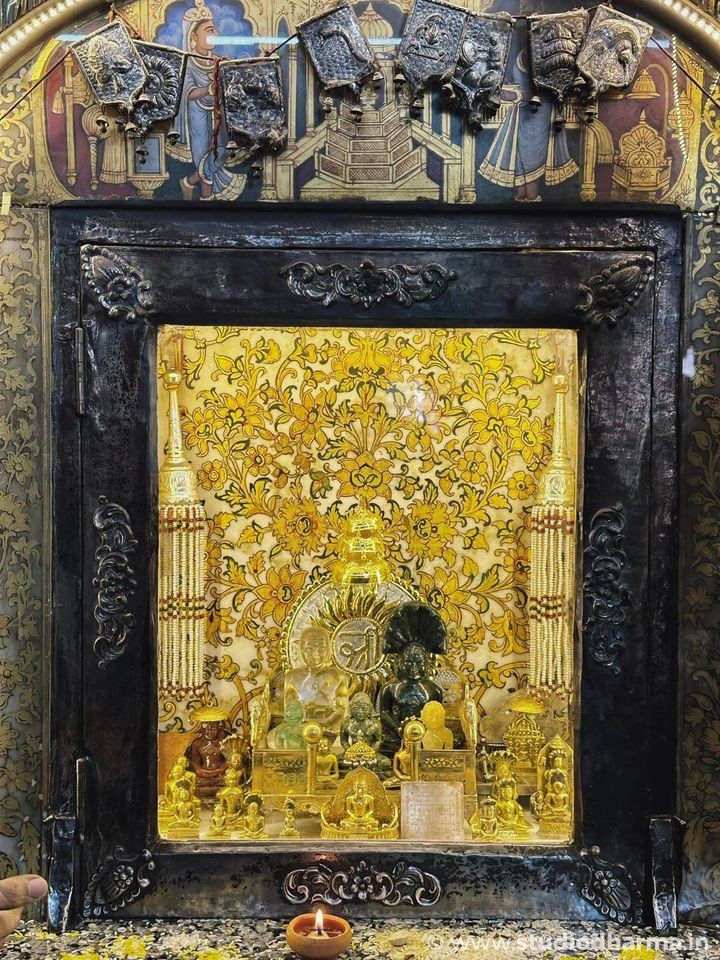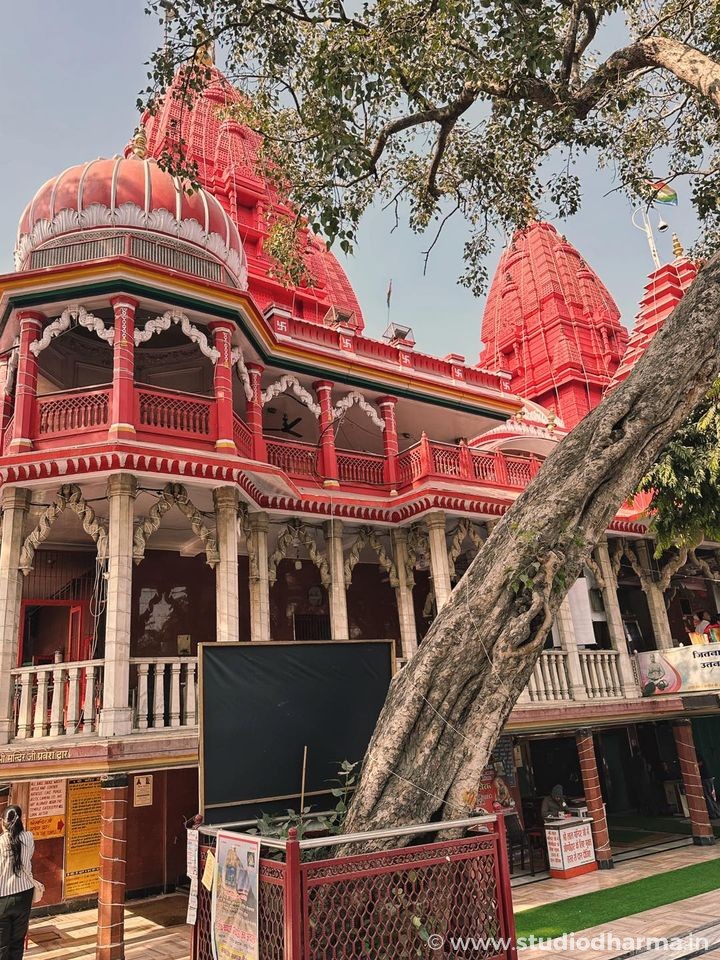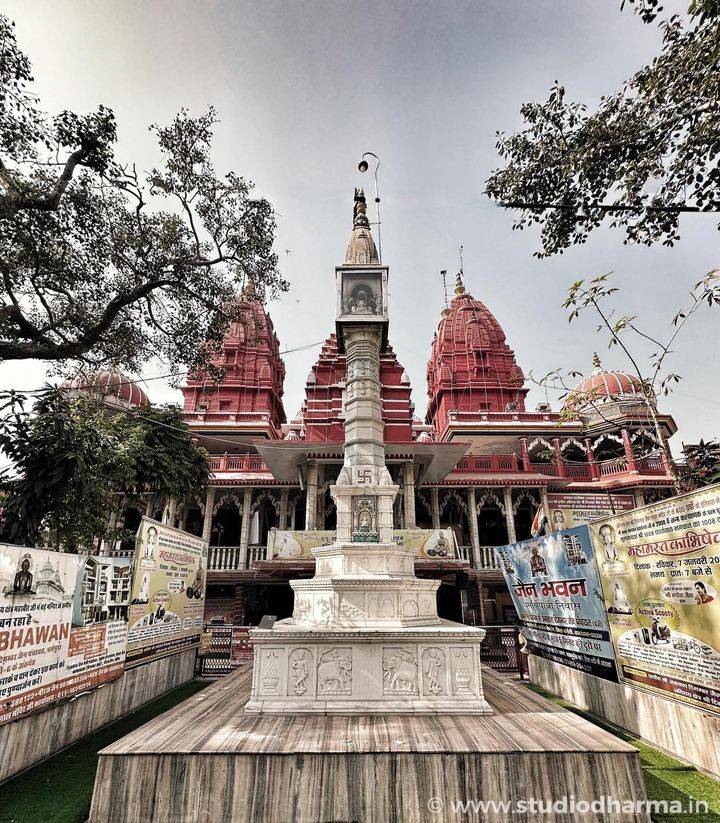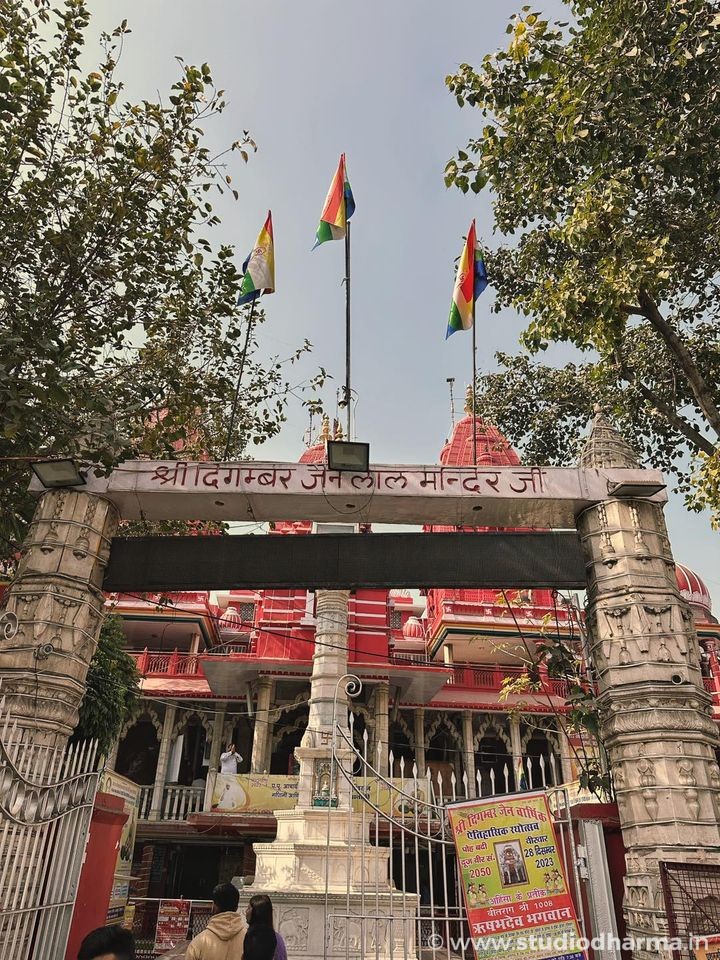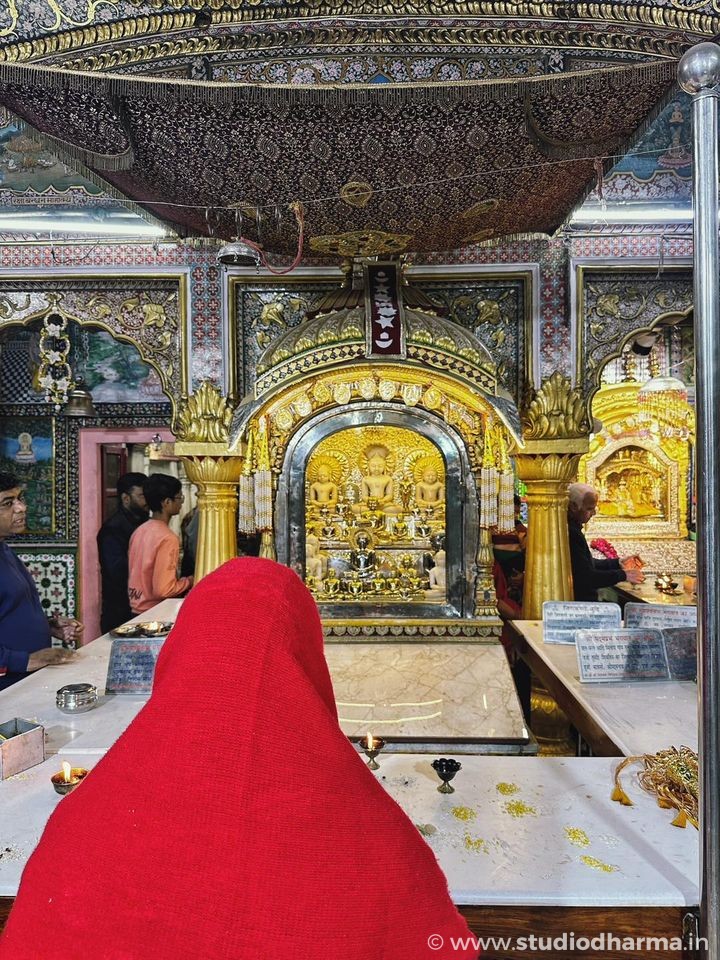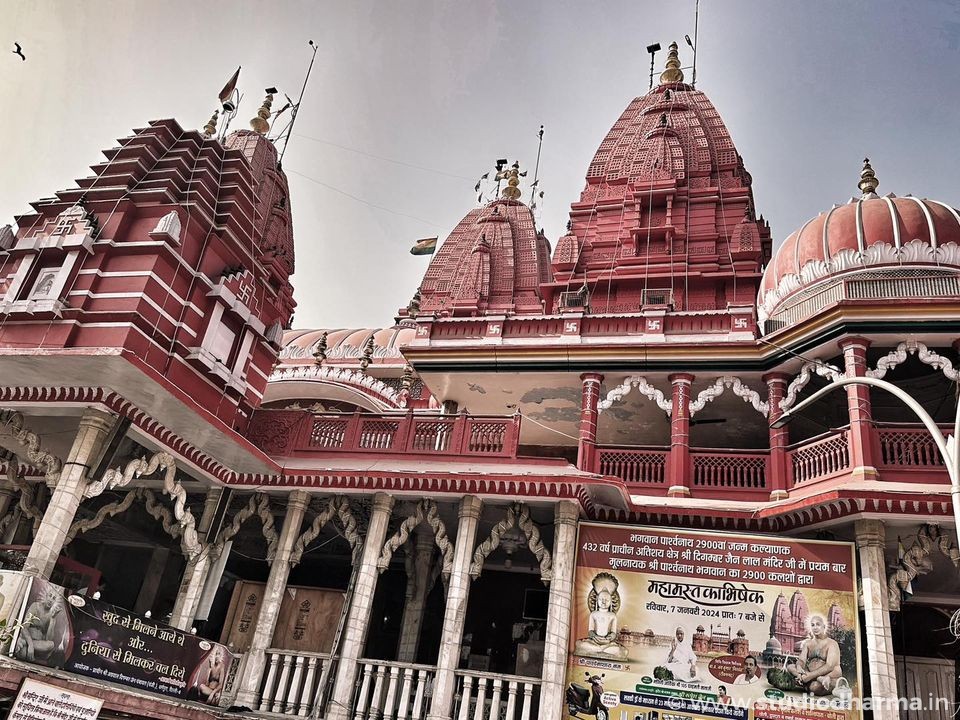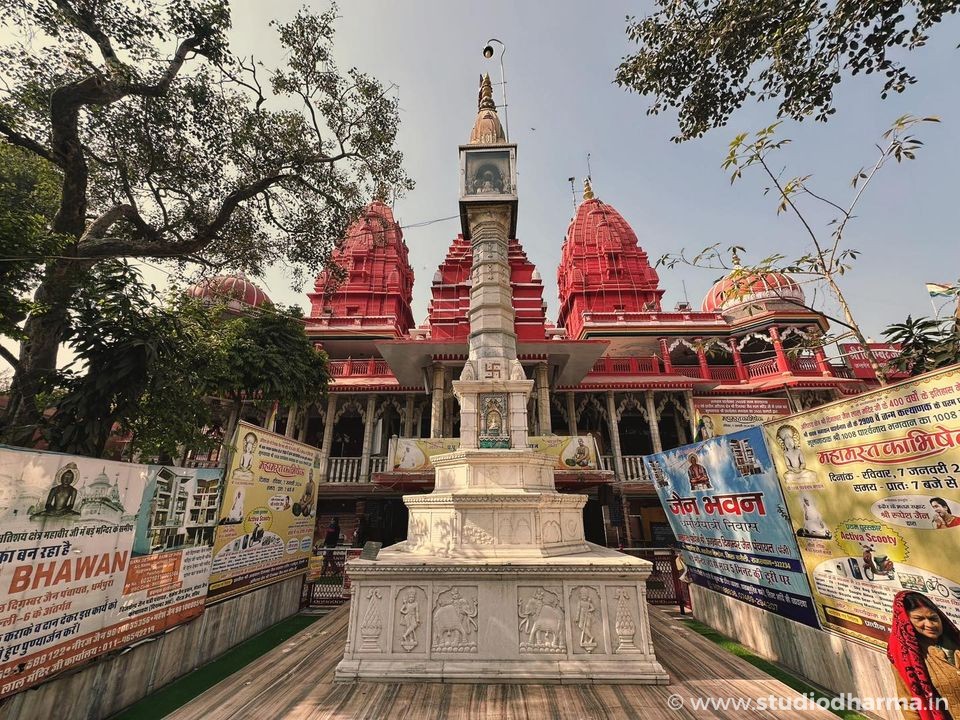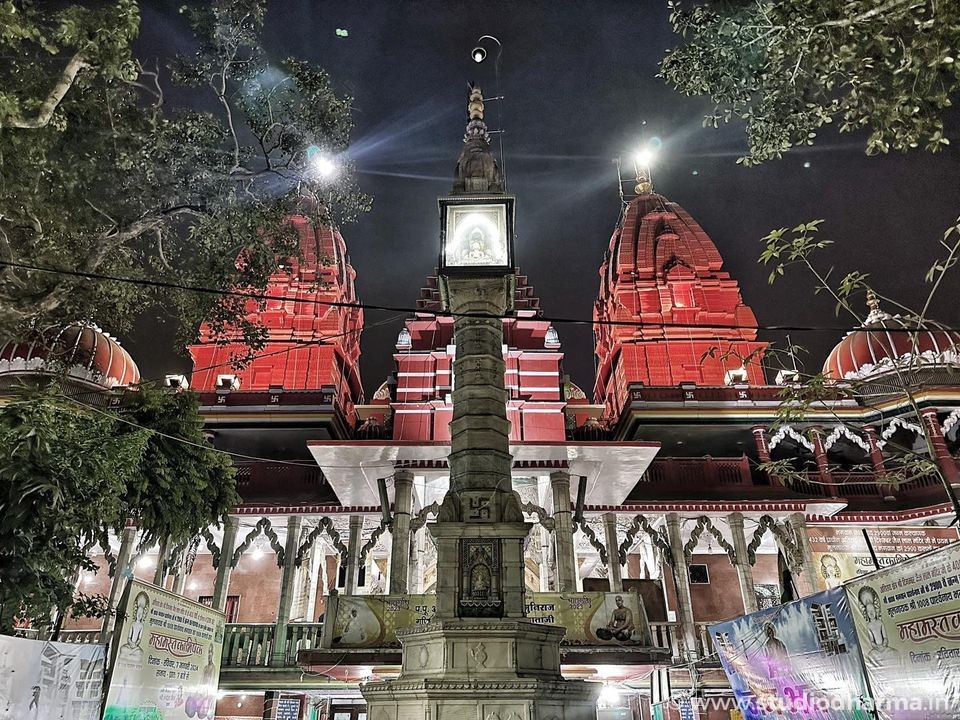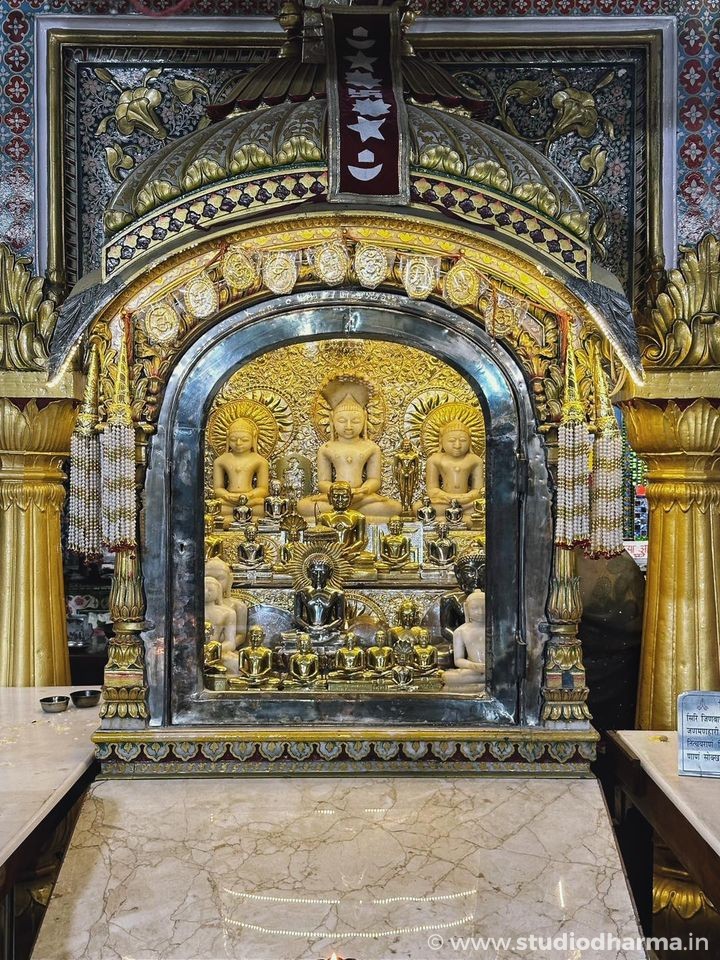श्री दिगंबर जैन लालमंदिर, दिल्ली-6.
श्री दिगंबर जैन लालमंदिर, दिल्ली-6.
श्री दिगंबर जैन लाल मंदिर, दिल्ली-6 इतिहास और आध्यात्मिकता कि एक अधभूत निशानी है। यह विश्वसनीयता और धरोहर का अच्छा प्रतीक है। यह मंदिर वास्तुकला का एक अद्वितीय चमत्कार है, जो 17वीं सदी में बनाया गया था।यह शहर के सबसे पुराने जैन मंदिरों में से एक है, जो दूर-दूर से भक्तों और आगंतुकों को आकर्षित करता है।
मंदिर की धारावाहिक लाल भव्यता और जटिल नक्काशी देखने लायक हैं, जो प्राचीन भारत की समृद्ध कला परंपराओं और वास्तुशिल्प की महिमा को प्रतिबिंबित करती हैं। आपको अंदर कदम रखते ही, ध्यानशांति के वातावरण की अनुभूति होगी वह भी ध्यानार्पण और जलते हुए धूप की सुगंध के बीच।
लाल मंदिर की कहानी लगभग 350 साल पुरानी है। जब शाहजहाँ, मुग़ल सम्राट, दिल्ली में लाल किले का निर्माण कर रहे थे, तब उन्होंने कई प्रमुख जैन व्यापारियों को शहर में बसने के लिए आमंत्रित किया। उन्हें चांदनी चौक के दक्षिणी खंड पर जमीन आपूर्ति की गई, और इलाका दारिबा के रूप में प्रसिद्ध हुआ। भारत में दिगंबर जैन मंदिरों के संकलन पुस्तककार आचार्य बलभद्र के अनुसार, यह 1656 में बनाया गया था।
पुरानी दिल्ली को मुग़ल सम्राट शाहजहां (1628–1658) ने स्थापित किया था जिसे आमतौर पर पुराना शहर या दीवारों से घिरे शहर के रूप में जाना जाता है, जिसके सामने लाल किले, सम्राटीय निवास स्थान, के सामक्ष चांदनी चौक की मुख्य सड़क थी। पुस्तककार आचार्य बलभद्र कहते हैं कि मुग़ल सेना के एक जैन अधिकारी के शिविर में एक तीर्थंकर मूर्ति को व्यक्तिगत पूजा के लिए रखा गया था। धीरे-धीरे, जैन सेना के अन्य अधिकारी इस शिविर में आकर्षित होने लगे, और आगे चलकर, 1656 में साइट पर एक जैन मंदिर बनाया गया। उस समय, मंदिर को "उर्दू मंदिर" (क्योंकि यह "उर्दू बाजार" क्षेत्र में स्थित था) और "लश्करी मंदिर" (लश्कर एक सेना शिविर का अर्थ होता है) भी कहा जाता था। पुस्तककार आचार्य बलभद्र ने इसके बारे में यह भी कहा है कि मंदिर के बारे में कई किंवदंतियाँ हैं। एक ऐसी किंवदंति दावा करती है कि शाहजहां के उत्तराधिकारी औरंगज़ेब ने कभी भी मंदिर में सभी संगीत यंत्रों पर प्रतिबंध लगाया था। हालांकि, आश्चर्यजनक रूप से, मुग़ल अधिकारीयों की जांचों के बावजूद मंदिर से ढोलों (नगाड़ों) की आवाज़ें सुनाई देती थीं। अख़्तरज़ेब खुद चमत्कार देखने के लिए मंदिर का दौरा करने गए, और अंत में, प्रतिबंध उठा दिया गया।
वर्तमान दिन के मंदिर की इमारतें मुग़ल साम्राज्य के पतन के बाद निर्मित हुईं हैं, और 1878 से दिनांक मिलते हैं।
पुस्तककार आचार्य बलभद्र कहते हैं कि मंदिर में एक मूर्ति 1491 की तारीख में वापस जाती है और मूल रूप से भट्टारक जिनचंद्र ने संवत 1548 (1491 ईसवी) में जिवराज पापरीवाल के द्वारा स्थापित की थी। मंदिर में प्रमुख मूर्ति तीर्थंकर पार्श्वनाथ की है। मंदिर में की गई देवताओं को मुग़ल सेना के एक जैन अधिकारी के शिविर में पहले रखा गया था।
इस कम्प्लेक्स में अद्वितीय पक्षी अस्पताल भी शामिल है, जो घायल और बीमार पक्षियों की देखभाल करता है, जो जैन सिद्धांत अहिंसा या अहिंसा को दर्शाते हैं।
श्री दिगंबर जैन लाल मंदिर के दर्शन करना सिर्फ एक आध्यात्मिक अनुभव ही नहीं है, बल्कि समय, संस्कृति और जैन धर्म की चिरस्थायी विरासत के माध्यम से एक यात्रा भी है। यह एक ऐसी जगह है जहां भूतकाल वर्तमान से मिलता है, दिल्ली-6 की आत्मा और प्राचीन धर्म की गहरी ज्ञानवर्धितता की झलक प्रदान करता है।
आइए, इस पवित्र स्थान की शांति और आध्यात्मिकता में खुद को लीन करें, और परंपरा और आधुनिकता के संगम का साक्षी बनें।
SHRI DIGAMBAR JAIN LALMANDIR,DELHI-6.
"Steeped in history and spirituality, Shri Digambar Jain Lal Mandir in Delhi-6 stands as a timeless symbol of faith and heritage. This architectural marvel, built in the 17th century, is one of the oldest Jain temple in the city, drawing devotees and visitors from far and wide.
The temple's striking red facade and intricate carvings are a sight to behold, reflecting the rich artistic traditions and architectural splendor of ancient India. As you step inside, you are enveloped by an aura of tranquility, amidst the melodious chants and the scent of burning incense.
Lal Mandir's story goes back almost 350 years. When ShahJahan, a Mughal emperor, built the walled city of Delhi and the Red Fort in 1648, he invited many prominent Jain traders to settle in the city. The land was allotted to them at the south end of Chandni Chowk, and the area came to be known as Dariba. According to Jain scholar Balbhadra Jain's compendium of Digambar Jain shrines in India, it was built in 1656.
Old Delhi was founded by Mughal Emperor Shah Jahan (1628–1658) who built what is commonly known as the old city or walled city, surrounded by a wall, with the main street Chandni Chowk in front of the Red Fort, the imperial residence. Shah Jahan invited several jain merchants to come and settle in the city and granted them some land south of the Chandani Chowk around Dariba Gali.
According to Jain scholar Balbhadra Jain's compendium of Digambar Jain shrines in India, the temple was constructed during the reign of the Mughal emperor Shah Jahan. Balbhadra Jain states that a Jain officer of the Mughal army is said to have kept a tirthankara statue in his tent for personal worship. The tent gradually started attracting other Jain army officers, and subsequently, a Jain temple was constructed at the site in 1656. At that time, the temple was also known as "Urdu temple" (because it was located in an area called "Urdu Bazaar") and "Lashkari Mandir" (laskhar means an army camp). Balbhadra Jain also mentions that there are several legends about the temple. One such legend claims that Shah Jahan's successor Aurangzeb once ordered a ban on all musical instruments in the temple. However, miraculously, sounds of drums (nagadas) would be heard emanating from the temple despite inspections from the Mughal officers. Aurganzeb himself visited the temple to see the miracle, and finally, lifted the ban.
The present-day temple buildings were constructed after the fall of the Mughal Empire, and date from 1878.
Balbhadra Jain states that one of the idols in the temple dates back to 1491, and was originally installed by Bhattaraka Jinachandra. The Jain community acquired three marble idols installed by Jivaraj Papriwal under the supervision of Bhattaraka Jinachandra in Samvat 1548 (1491 AD) for the temple. The main icon is that of Tirthankara Parshvanath.The deities in temple were originally kept in a tent belonging to an Jain officer of the Mughal army.
The complex also includes the unique Bird Hospital, a compassionate initiative that tends to injured and ailing birds, embodying the Jain principle of ahimsa or non-violence.
Visiting Shri Digambar Jain Lal Mandir is not just a spiritual experience, but a journey through time, culture, and the enduring legacy of Jainism. It's a place where the past meets the present, offering a glimpse into the soul of Delhi-6 and the profound wisdom of an ancient faith.
Come, immerse yourself in the serenity and spirituality of this hallowed sanctuary, and witness the harmonious coexistence of tradition and modernity.
What's Your Reaction?







